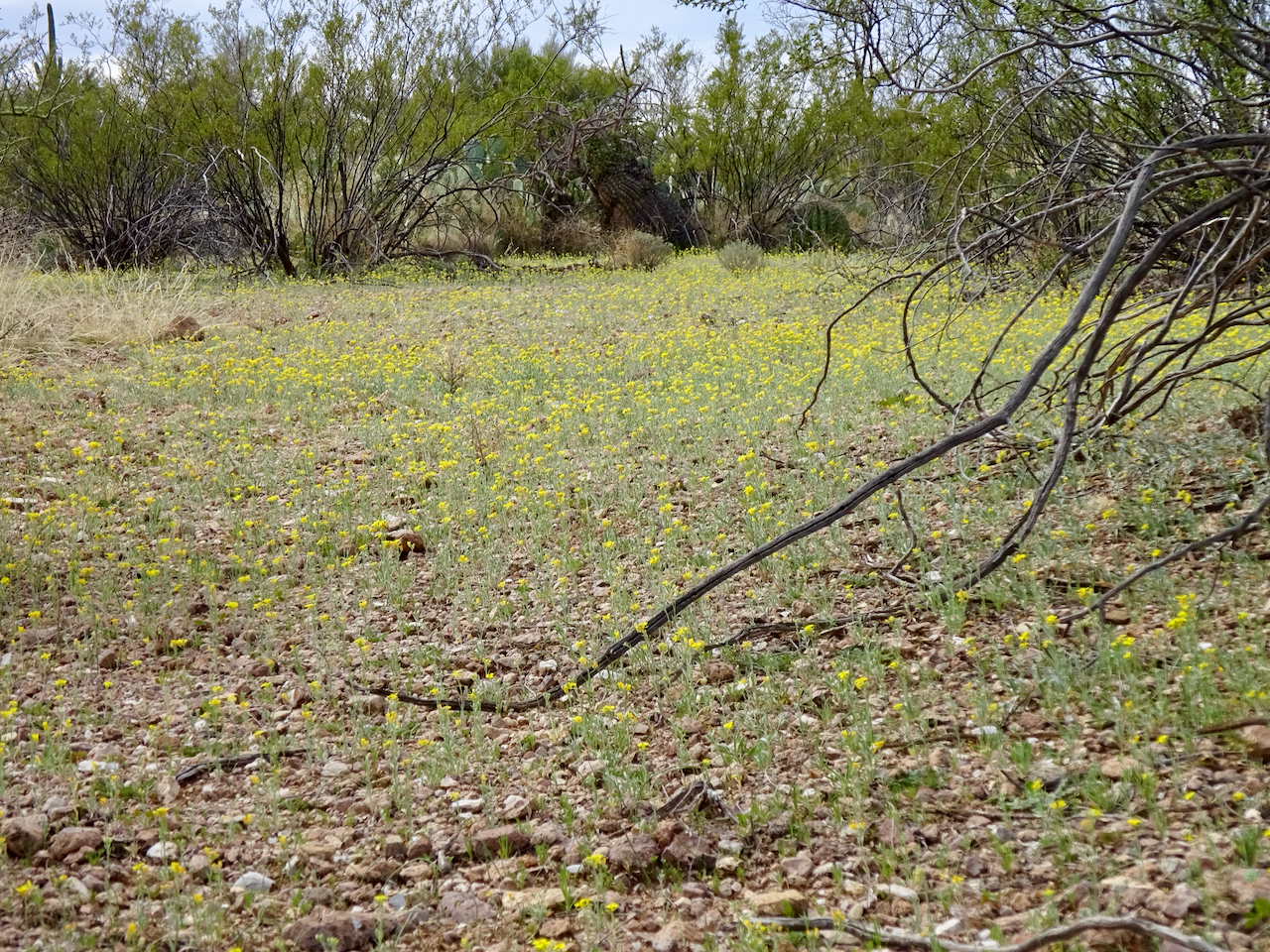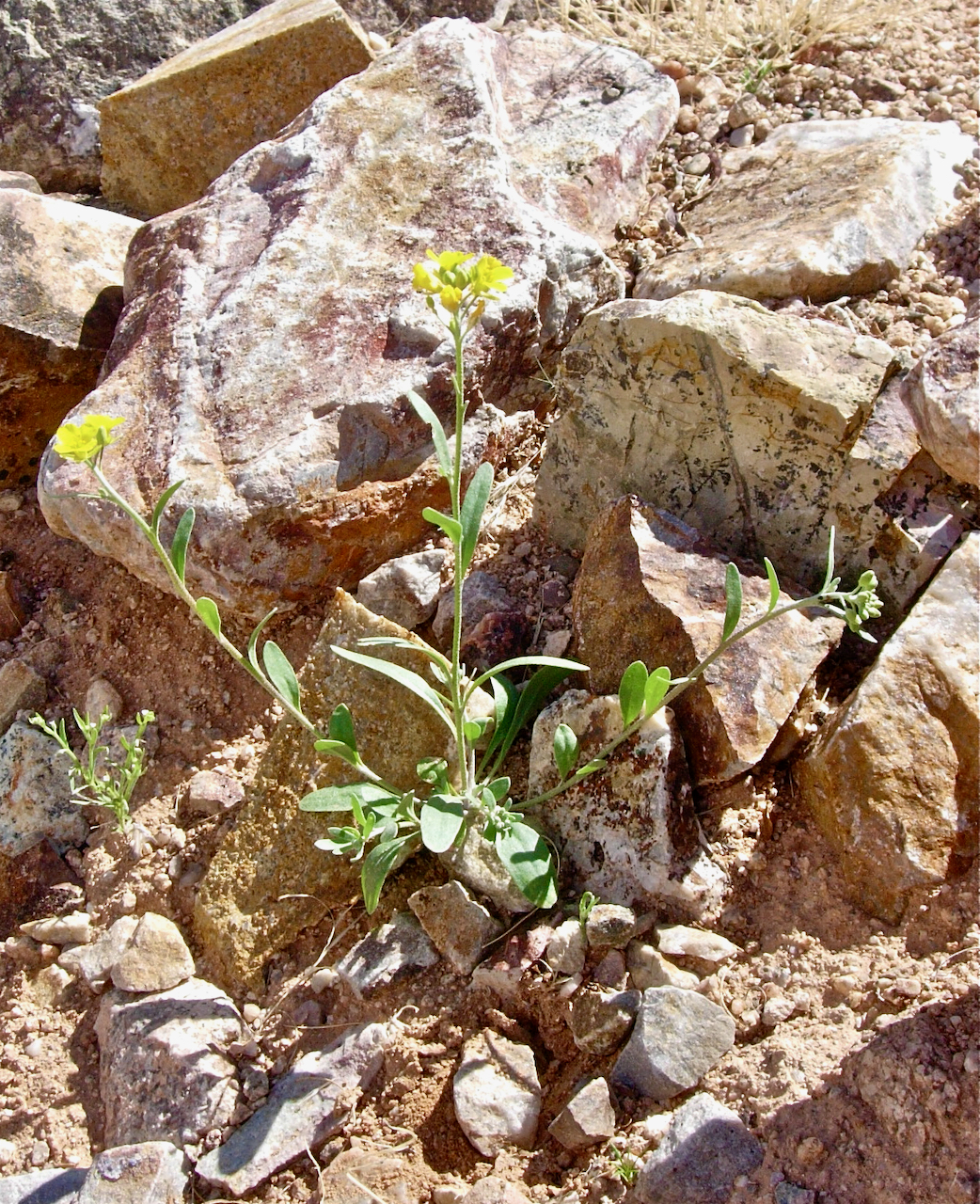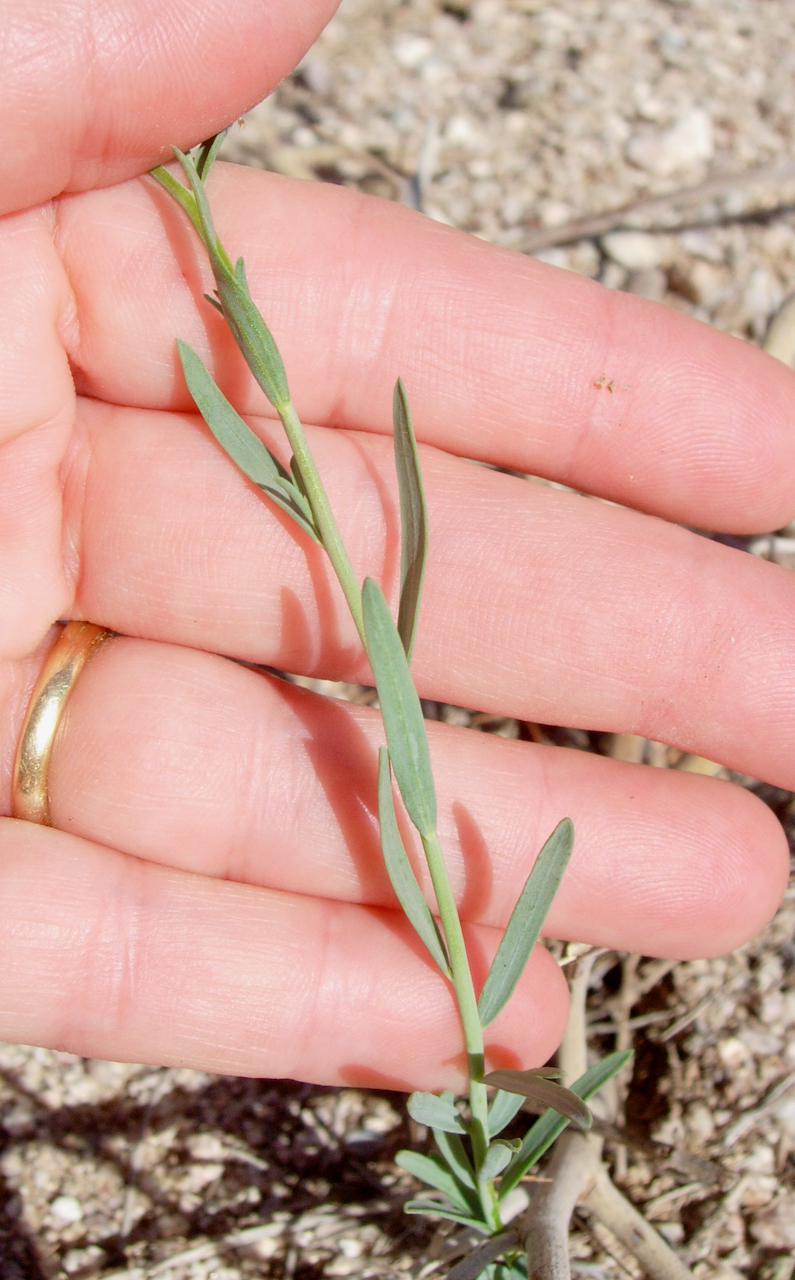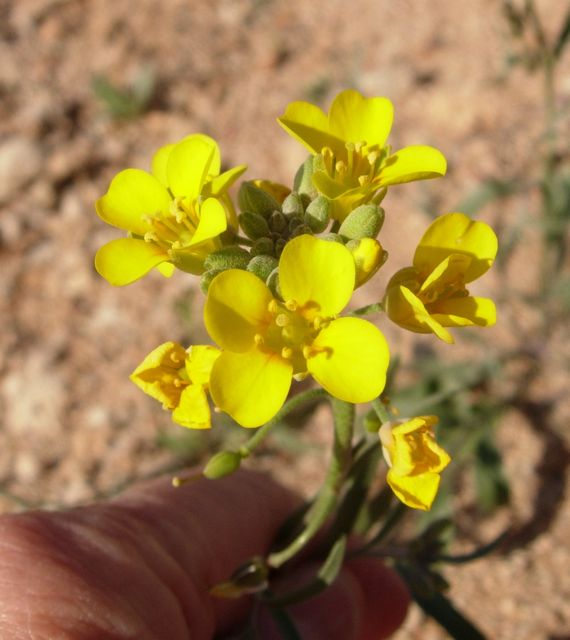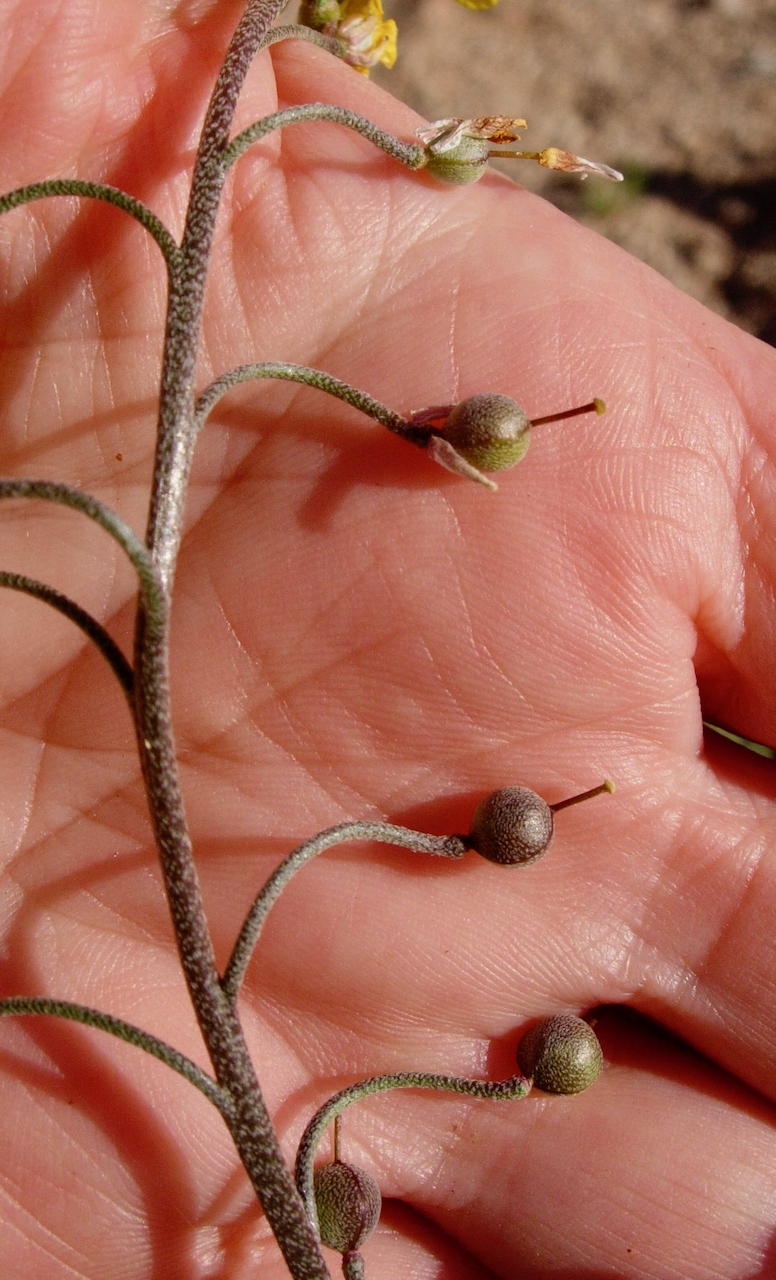Bladderpod Mustard
Physaria gordonii
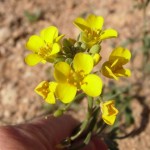
About the Plant
Bladderpod mustard is a native spring annual with large bright yellow flowers. If winter rains are good, this native can carpet the earth and eventually reach a height of 16 inches. Bladderpod mustard needs no care from you other than to leave it alone until it dies back and seeds are released.
Here bladderpod mustard begins to cover the earth with yellow flowers. Photo taken February 19, 2016 at Saguaro National Park-East.
Note: previous scientific name for this plant was Lesquerella gordonii.
Wildlife value: flowers attract bees and other insects
More Information:
Weekly Plant on bladderpod mustard
Map of distribution in US (yellow indicates plant is native but rare)
Technical botanical description from SEINet
ID Characteristics
This plant is in the Brassicaceae - the mustard family.
Bladderpod mustard can reach to a height of 16 inches. It starts as a clump of basal leaves, then puts up several flower stalks. Flowers are on the end of each stalk.
The basal leaves can grow to about 2 inches long. They are often spoon shaped - wider at the end, tapering almost to a petiole at the base. There may be a notch or two in the side of the leaf. The leaves on the flower stalk are alternate, linear, and perhaps an inch long.
Bladderpod mustard has the typical 4 petals of the mustard family but they are large and showy, a bright yellow. The flower is at least one-third of an inch across.
The fruit helps distinguish this plant from other mustards. The fruit is spherical (a bladder-pod), with the remnants of the stigma on the end, and may be reddish. The stalk is S-shaped, rather than straight.
